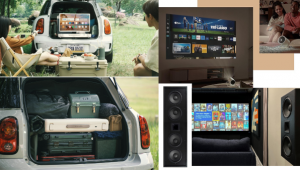DTV Transition Is a Year Old
Retrevo reports that of 200 site visitors, 52 percent were unaffected by the DTV transition, 41 percent bought a box, 19 percent bought a DTV, 13 percent subscribed to cable or satellite, and 11 percent bought a new antenna. Those numbers add up to more than 100 but obviously some people belonged to more than one group. There's probably some overlap, for instance, among the DTV and antenna buyers. Was the transition a good thing? Fifty-one percent said yes, 23 percent said no, and 26 percent had no opinion. Retrevo concluded that the winners were everyone but the consumer.

Meanwhile, the Nielsen people surveyed viewers who didn't weather the transition well. They had dropped to 2.5 percent of U.S. households as of the transition date. Of those, 74.3 percent subsequently got boxes, 18.2 percent got cable, and 7.5 percent got satellite. A lot of the remaining unready TVs were in bedrooms and other secondary locations. By September, three months after the transition, 99.4 percent of American households could get DTV signals in one way or another. Unlike Retrevo, Nielsen declared viewers the winners and said "homes are adapting."
Incredible as it may seem, the DTV transition story isn't complete. The Federal Communications Commission has declared its intention to repossess some of the spectrum for its national broadband plan. Supposedly this will be done on a voluntary basis and without depriving significant numbers of homes of DTV channels.
Thanks to ArsTechnica for its summary of the studies. See Retrevo study, Nielsen study, and Pete Putman's anniversary piece.
























































